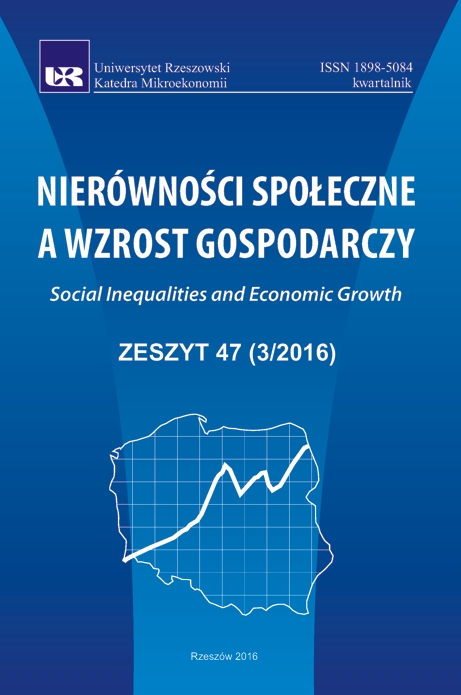Household Income Inequality in Poland from 2005 to 2013 – A Decomposition of the Gini Coefficient by Socio-Economic Groups
DOI:
https://doi.org/10.15584/nsawg.2016.3.31Keywords:
income inequality, Gini coefficient, decompositionAbstract
The aim of this study is the empirical analysis of the Gini coefficient decomposition by socio-economic groups in Poland from 2005 to 2013. The analysis was based on non-identifiable, individual household budget surveys data collected by Poland’s Central Statistical Office. For the purpose of this study income was defined as equivalized household disposable income, i.e. the unit of analysis is a household and household disposable income was adjusted using the OECD modi-fied equivalence scale. The Gini coefficient decomposition by socio-economic groups revealed that the residual term measuring the extent to which overall inequality is attributable to overlapping income distributions of individual socio-economic groups contributed to the greatest extent to overall income inequality in Poland during the analyzed period. The second most important factor explaining income ine-quality was the component of inequality within socio-economic groups. Income inequality be-tween socio-economic groups contributed about 28–30% to overall income inequality in Poland from 2015 to 2015. The Gini decomposition results allow to conclude, that the structure of the contribution of in-dividual socio-economic groups in Poland was the following. Employees’ households were the group with the largest, increasing contribution of weighted income variability to overall income disparities. The second group that was explaining total income disparities to the greatest extent regarding within-inequality were old-age pensioners. The remaining socio-economic groups had only a marginal impact in this regard in Poland from 2005 to 2013.Downloads
Download data is not yet available.
Downloads
Published
2020-11-11
How to Cite
Graca-Gelert, P. (2020). Household Income Inequality in Poland from 2005 to 2013 – A Decomposition of the Gini Coefficient by Socio-Economic Groups. Social Inequalities and Economic Growth, 3(47), 427–441. https://doi.org/10.15584/nsawg.2016.3.31
Issue
Section
Articles
License
Copyright (c) 2016 University of Rzeszow

This work is licensed under a Creative Commons Attribution-ShareAlike 4.0 International License.


